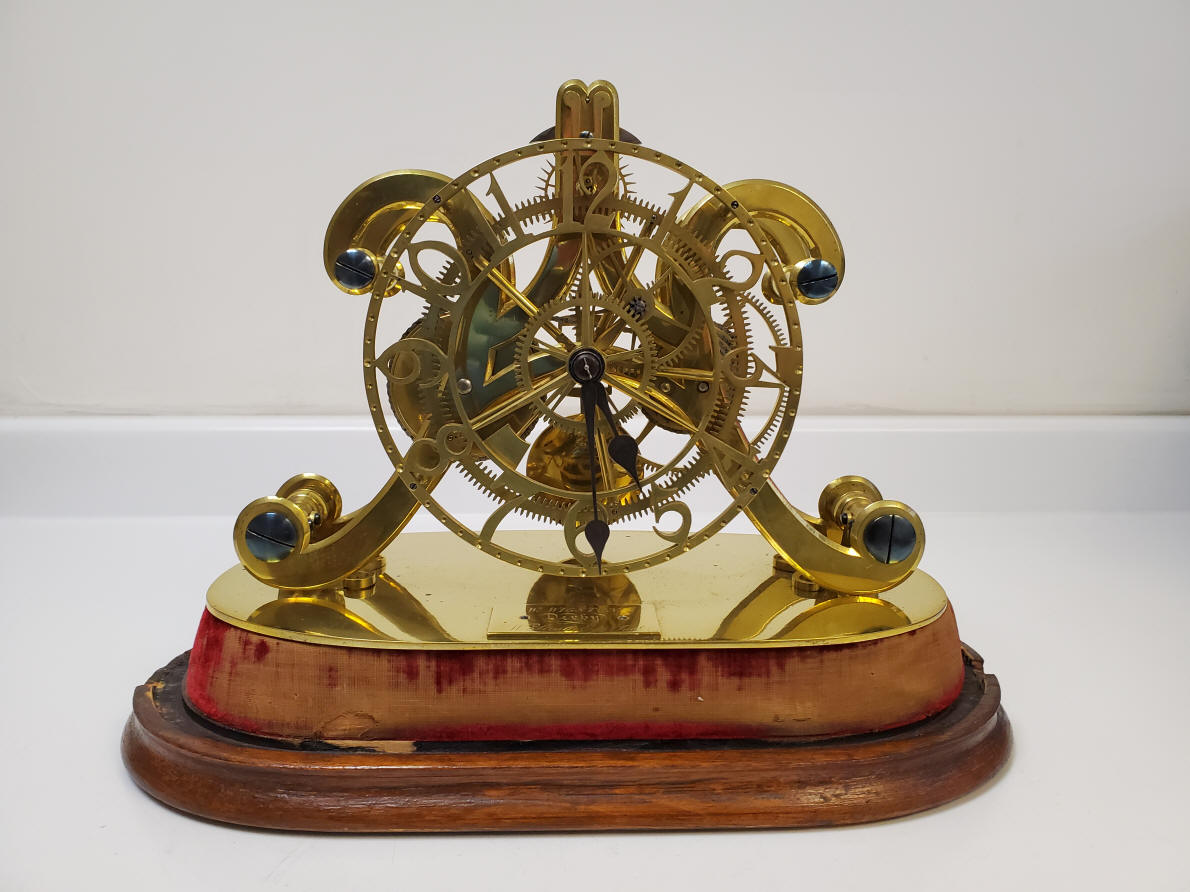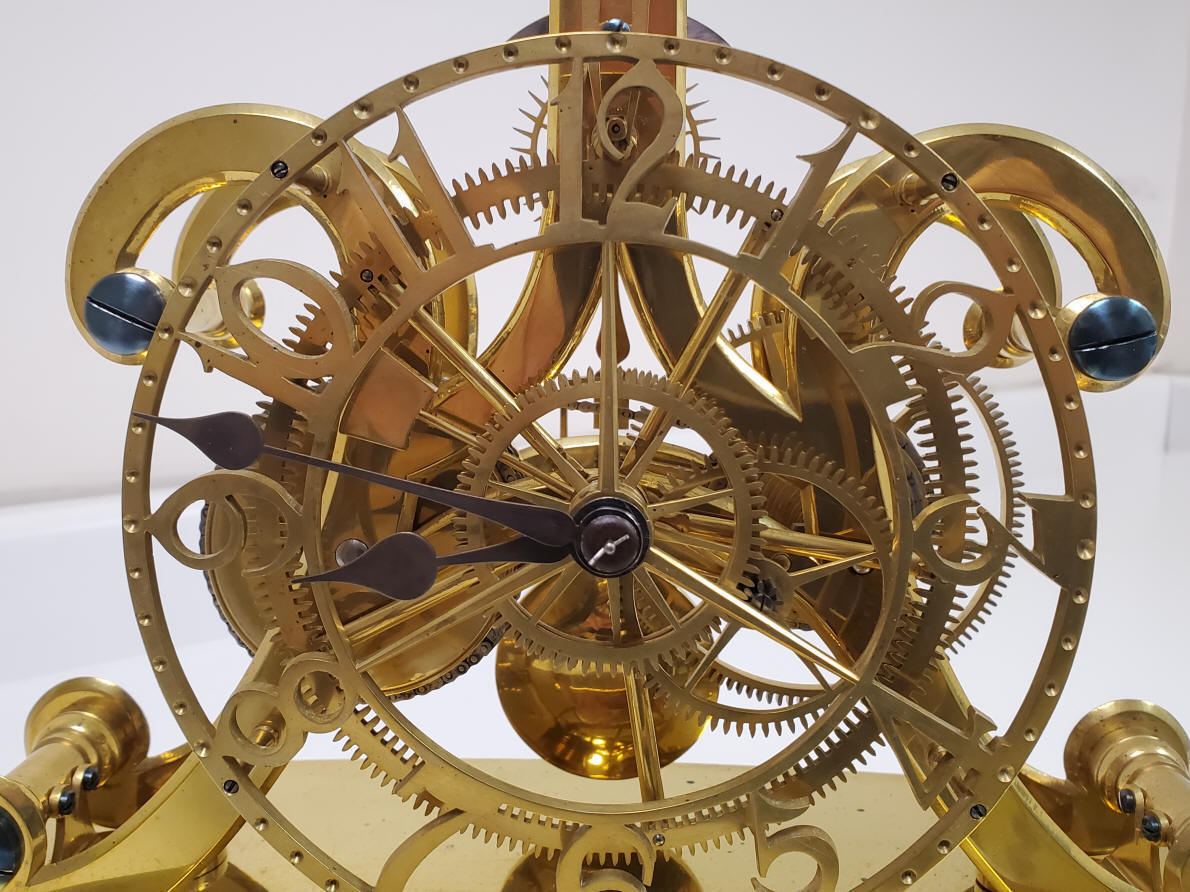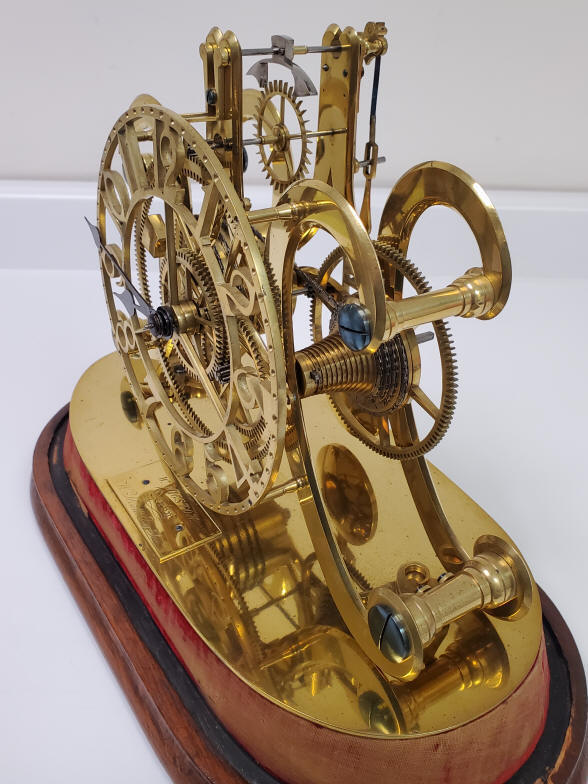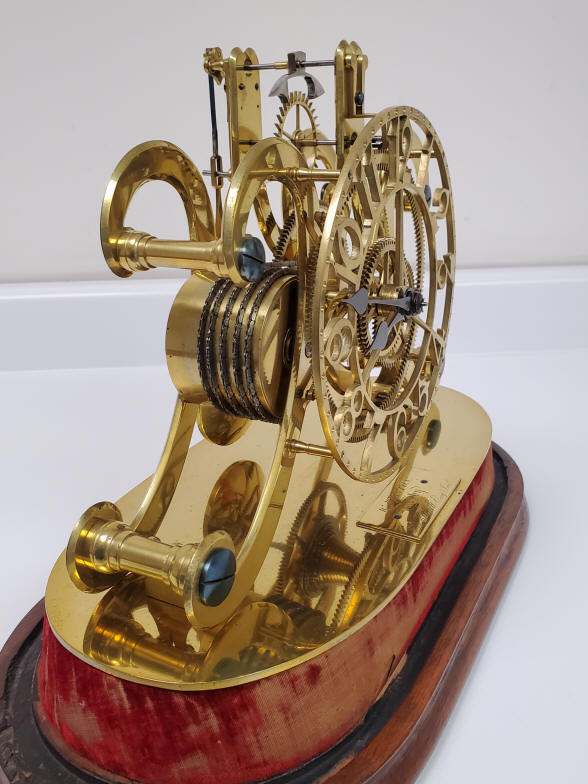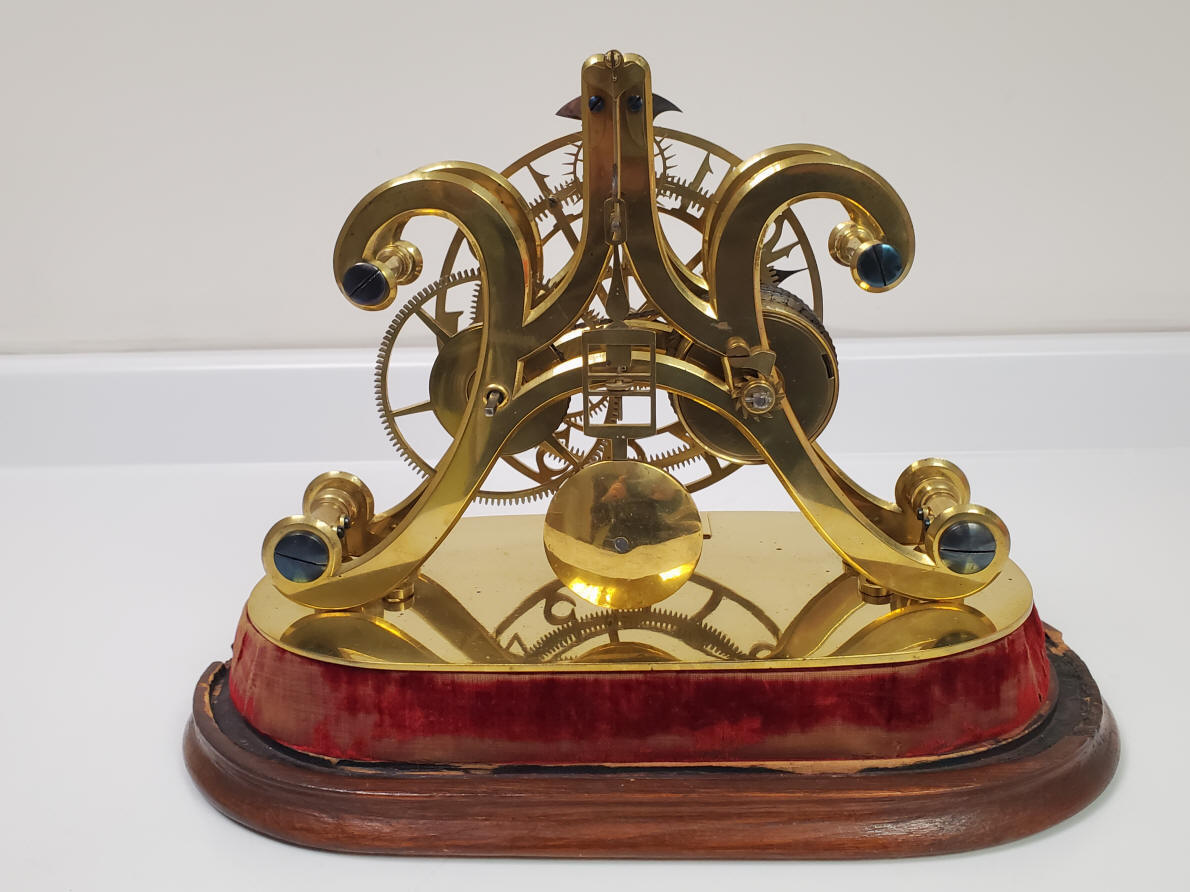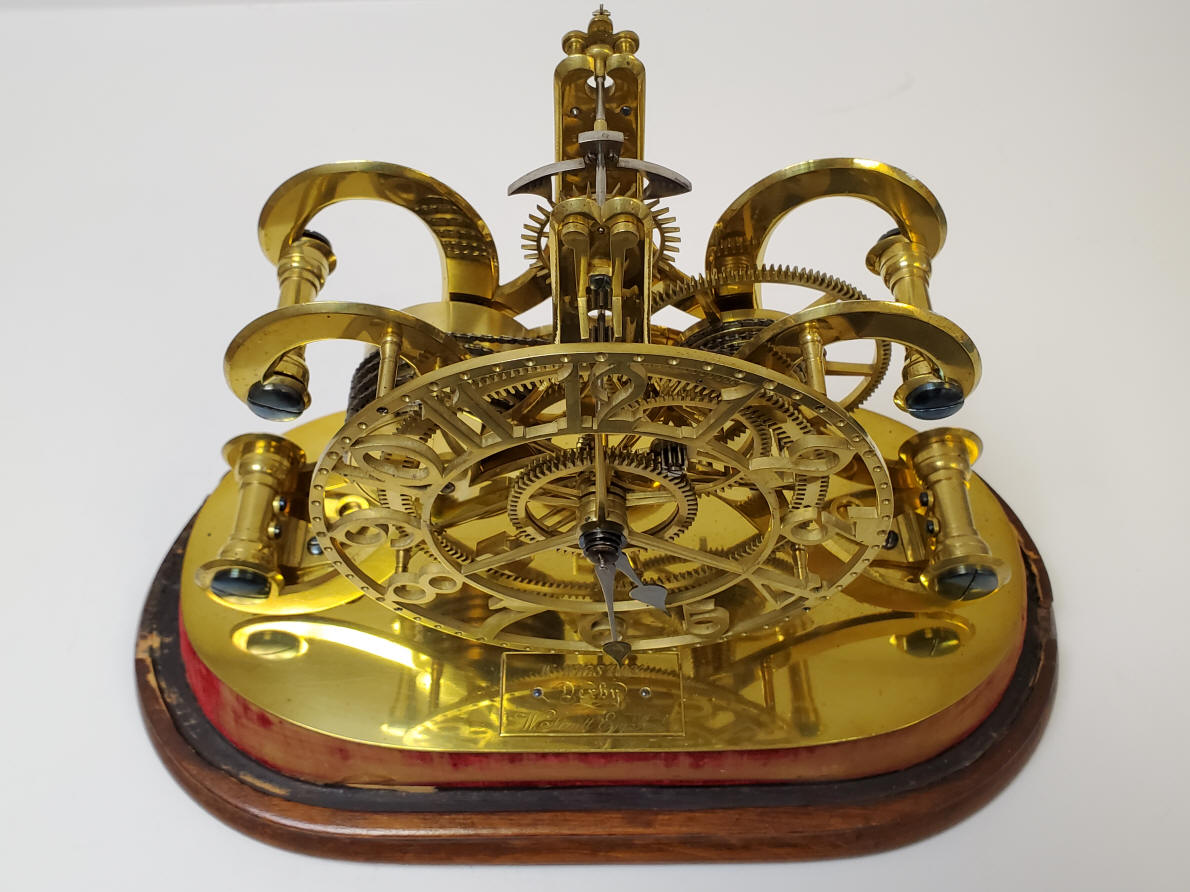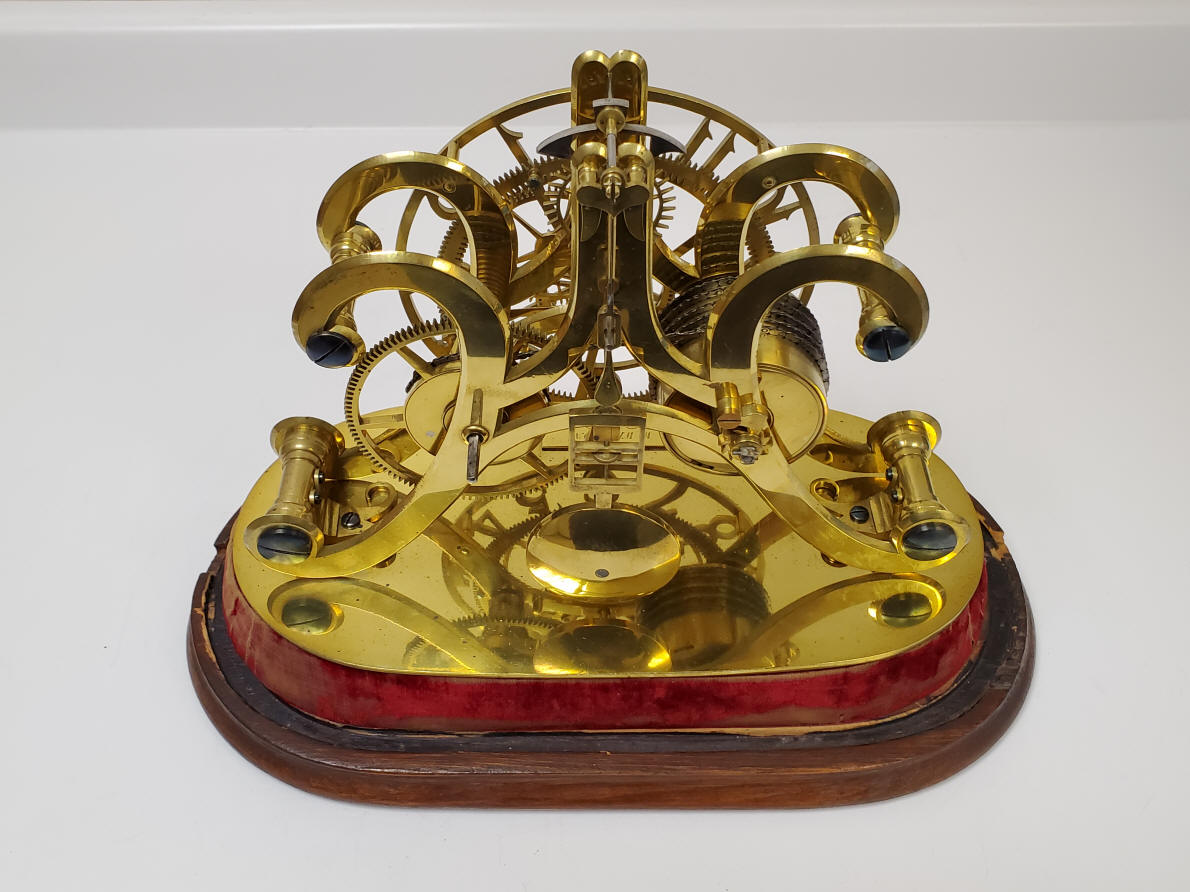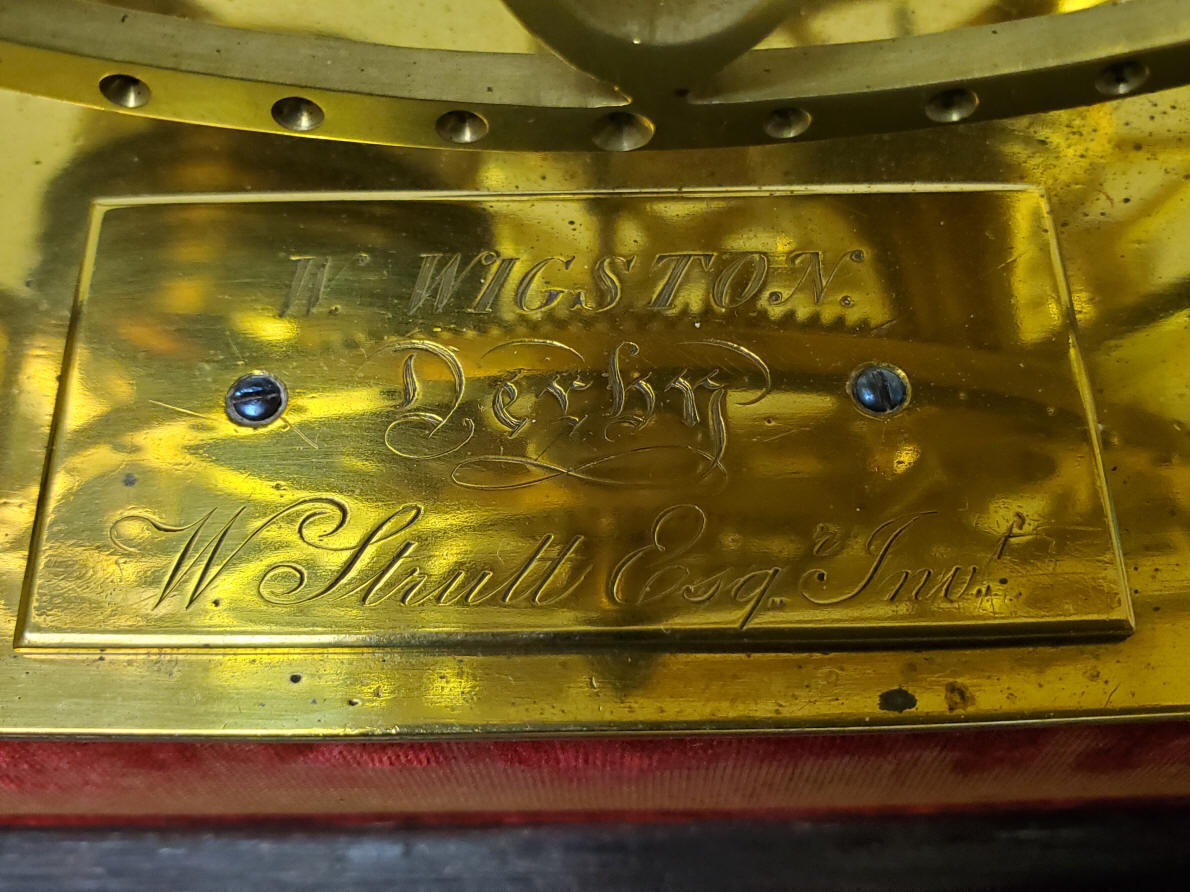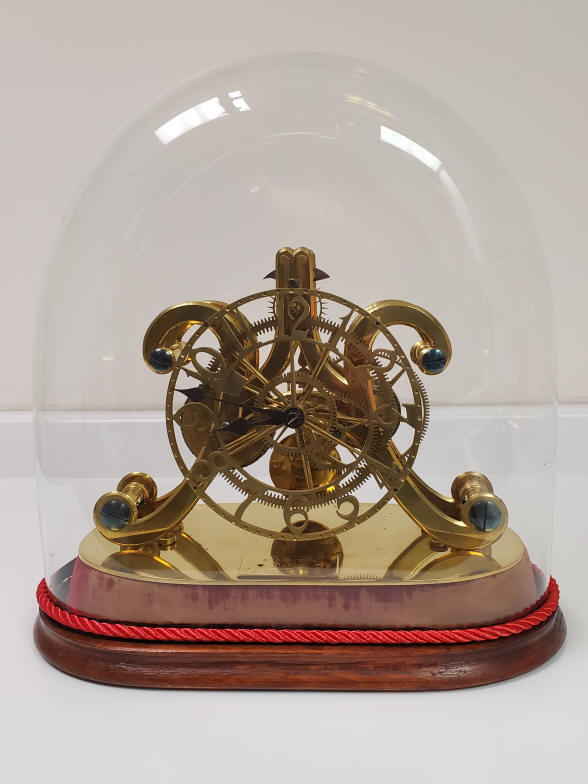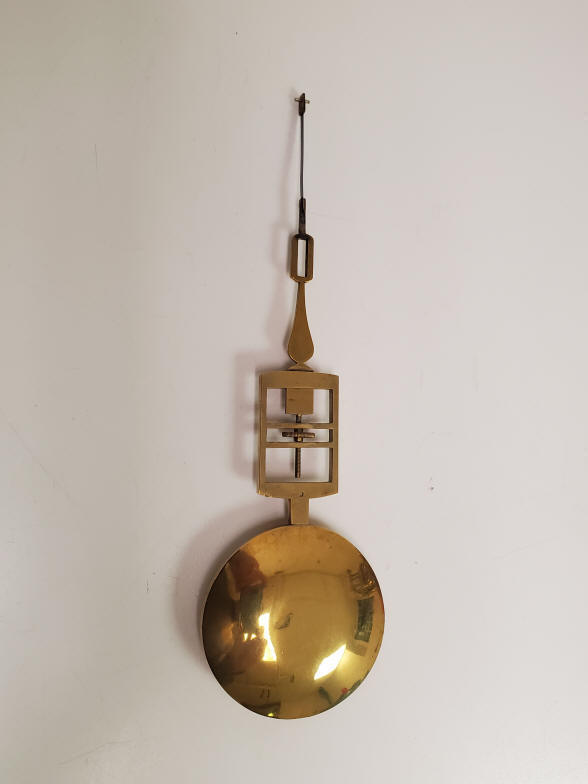|
William Strutt & William Wigston, Derby, England, c. 1828 The design by William Strutt of Derby from the late 1820s, was produced in small numbers by his friend, William Wigston. The original production ran to only 20 pieces due to the excessive cost. Strutt enlisted the help of his lifelong friend William Wigston who was also a gifted engineer and gathered inspiration for his epicyclic clock from the rotary machines being manufactured at the Wigston factory. Only a limited number were produced as the cost was found to be prohibitive and took too much time from the main function of the Wigston factory. The first clocks were signed 'W. Wigston, Derby' (immediately underneath) "wm. Strutt, Esqr, Invt' showing this to be a joint effort. This example has that designation. Later the designation only had 'Wm. Strutt'. It is not clear when the clocks ceased to be manufactured. William Strutt died in 1830 and Willliam Wigston survived him by only five years. The epicyclic skeleton clock, although unique to the horological world, was never seriously expected to supersede conventional timekeepers. The design was a radical departure from ordinary practice, and epicyclic or 'sun and planet' gear embodied in the train, which serves the double purpose of gearing up the escape wheel and at the same time gearing down the hour wheel in a most ingenious manner, without the usual motion wheels for that purpose. ¹
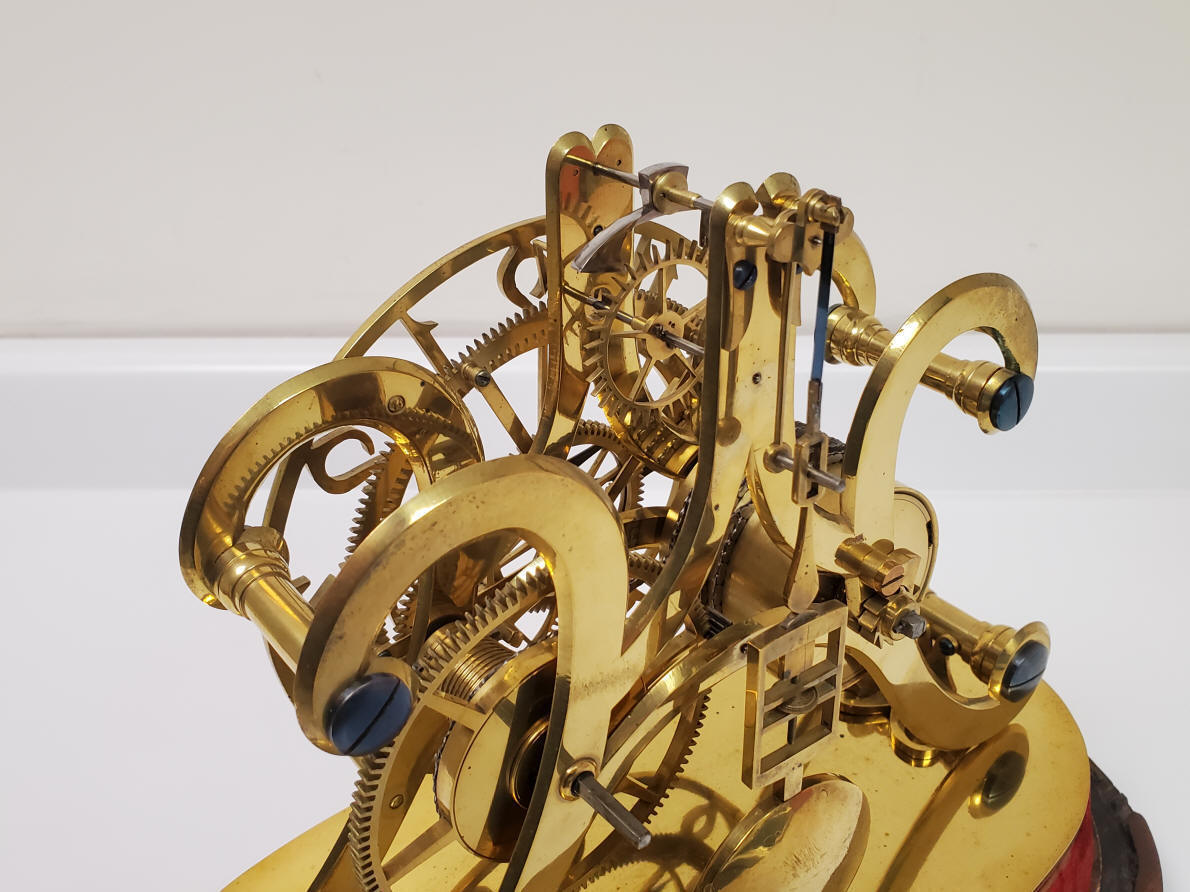
1. Skeleton Clocks, F.B. Royer-Collard, pg. 100 |
